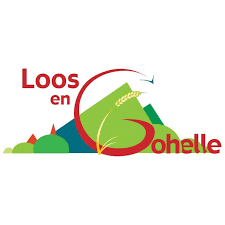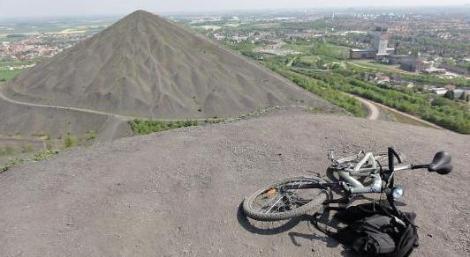In Loos-en-Gohelle, « tailor-made » sustainable mobility built with local residents
Marielle Cuvelier, January 2022
For the past thirty years, the municipality of Loos-en-Gohelle (Hauts-de-France) has been trying to respond to environmental challenges by building solutions through citizen participation. For several years now, the commune has been experimenting with different types of soft mobility, in response to environmental challenges. From the outset, this work has been developed with the participation of local residents.
What if, in order to develop sustainable mobility and change transport habits, public authorities relied more on the scale of the town and on the participation of local residents ?
This is the hypothesis we set out to explore with researchers from Gustave Eiffel University and in collaboration with the municipal team through a so-called « research action » project launched in April 2017 in Loos-en-Gohelle, a peri-urban commune in the Hauts-de-France region.
The aim of this experiment was to build, in partnership with the population, the transition to lower-emission mobility in order to reduce the over-dependence of a peri-urban territory on the individual car, improve citizens’ quality of life and combat social exclusion.
A commune with a long-standing commitment

For some thirty years, Loos-en-Gohelle (Hauts-de-France) has been committed to building a territory that meets environmental challenges. To this end, it has implemented an ambitious system for involving local residents in its projects.
This approach has produced results in terms of housing (eco-construction-renovation), energy (production of renewable energy), food (conversion to organic farming)… And to a lesser extent in the area of mobility within the municipality (bicycle lanes, pedibus and municipal personal transport service).
Loos-en-Gohelle is both a territory of experimentation in a number of sectors, and enjoys considerable expertise and experience in issues of public involvement. The project’s ambition is therefore to include the issue of mobility in the continuity of actions already undertaken.
Putting residents at the heart of the process
Designing alternatives to the private car involves identifying the characteristics of the area, questioning and understanding the travel habits of its inhabitants, in order to envisage their evolution and the avenues to be explored.
This approach has been implemented to identify residents’ needs and invent new mobility solutions. The assumption being that these solutions will be better disseminated, appropriated and sustained over the long term by a broad public if they are built with the residents.
In parallel with a communication strategy, the methodology applied was based on four successive phases which took place over eighteen months and can be summarized in four action verbs : immersion to understand, diagnosis to investigate, workshops to raise awareness and co-construct, and the challenge to experiment.
Starting from the needs of local residents
The social innovation of this project consists in building alternatives to the individual car based on the real needs of local residents. These needs were formulated explicitly and implicitly through a survey comprising some fifty questions.
Thanks to this survey, we were able to identify, quantify and qualify mobility conditions in Loos, travel habits according to activities, the sociology of respondents, and their difficulties and desires in this respect.
We drew up not only a statistical report, but also a qualitative overview of various aspects, such as attachment to the car, knowledge and use of new mobility solutions (self-service bicycles, car-sharing, telecommuting, etc.), and the financial, practical, physical and psychological difficulties people may encounter in their daily journeys.
It also highlighted the disparities in responses across the commune’s neighborhoods, reflecting social and spatial inequalities. Finally, we were able to identify the obstacles and levers that could help residents change their mobility behavior.
Building with residents
The co-construction of solutions was initiated during participatory workshops. The method consists in creating the conditions that bring together residents motivated by the issue of mobility, by providing the tools to guarantee the participative process and support the stakeholders in achieving the objectives set. This process also relies on collective intelligence, drawing on the expertise of each individual.
Of the dozen or so issues identified in the workshops, the rest of the work focused on those in which all the participants agreed. These subjects, grouped into two issues for the region - developing active modes for local travel and emphasizing inclusive and supportive mobility - essentially concern local daily mobility :
-
the development of cycling, with a focus on safe travel in the city
-
congestion and safety of walking and cycling around schools
-
Exchanging mobility services to reduce the number of individual journeys within an identified community
-
Reduce spatial inequalities between neighborhoods
-
The illiteracy of many people (no access to or mastery of digital tools)
Develop low-carbon daily mobility

Thanks to this approach, which raised the awareness of elected officials, mobility issues have been integrated into the city’s ecological and social transition project for the 2020-2026 term.
A deputy in charge of mobility has been appointed and a « mobility » project manager has even been recruited. A low-carbon daily mobility project is currently being developed, with the aim of providing a systemic response (rather than a single solution) based on the needs expressed by local residents.
The first stage of this project consists of drawing up an action plan based on three key areas to be implemented jointly : making the use of private cars less attractive ; deploying a system of active and shared modes of transport, accessible to all ; encouraging and supporting changes in behavior.
A « mobility » steering committee now brings together elected representatives, employees, citizens and partners (Université Gustave Eiffel, Droit au Vélo association, etc.) to address these issues. An evaluation methodology based on quantitative and qualitative indicators will be developed.
Development workshop projects
With the support of a research team, the commune has already initiated studies into projects for the future system of active and shared modes of transport : car-sharing or safe hitchhiking, bicycle plan, school ecomobility, solutions for powering shared electric vehicles using existing photovoltaic installations in the area, and development of a strategy for changing mobility behaviours.
These projects pay particular attention to ensuring that solutions guarantee access to mobility services for all, without necessarily requiring a smartphone or an Internet connection, so as not to increase inequalities.
This action-research has shown that a synergy between local authorities, residents and local players, based on a methodology derived from public research, makes a positive contribution to building a coherent approach to more sustainable mobility.